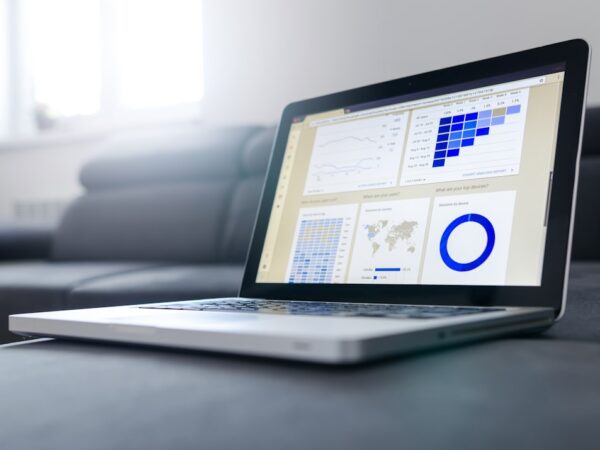
Demystifying Economics: A Beginner’s Guide to Understanding the Basics
Economics is a social science that studies how individuals, businesses, and governments make choices about the allocation of scarce resources. It is concerned with understanding how these choices affect the production, distribution, and consumption of goods and services. In other words, economics is about how society manages its limited resources to satisfy unlimited wants and needs.
The importance of economics in society cannot be overstated. It provides us with a framework for understanding how the economy works and how different factors influence economic outcomes. By studying economics, we can gain insights into why certain policies succeed or fail, why some industries thrive while others decline, and how individuals and businesses can make informed decisions in a complex and ever-changing economic environment.
Key Takeaways
- Economics is the study of how people allocate scarce resources to satisfy their unlimited wants and needs.
- Supply and demand are the basic principles of economics that determine prices and quantities in a market.
- The government plays a crucial role in regulating the economy through policies such as taxation, subsidies, and regulations.
- Economic indicators such as GDP, inflation, and unemployment provide valuable information about the health of the economy.
- Macroeconomics focuses on the overall performance of the economy, while microeconomics examines individual behavior and decision-making.
- The global economy is interconnected, and events in one country can have ripple effects around the world.
- Money and banking are essential components of the economy, facilitating transactions and providing liquidity.
- Investing and financial markets allow individuals and businesses to allocate capital and manage risk.
- Economic policies can have significant impacts on society, including income inequality, environmental sustainability, and access to healthcare and education.
- The future of economics is likely to be shaped by technological advancements, demographic changes, and global challenges such as climate change and inequality.
Understanding the Basics: Supply and Demand
Supply and demand are fundamental concepts in economics that explain how prices are determined in a market economy. Supply refers to the quantity of a good or service that producers are willing and able to sell at a given price, while demand refers to the quantity of a good or service that consumers are willing and able to buy at a given price.
The interaction between supply and demand determines the equilibrium price and quantity in a market. When demand exceeds supply, prices tend to rise as producers can charge higher prices for their goods or services. Conversely, when supply exceeds demand, prices tend to fall as producers need to lower prices to attract buyers.
Examples of supply and demand in action can be seen in everyday life. For instance, when there is a shortage of a particular product, such as the latest smartphone, the price tends to increase as consumers are willing to pay more to get their hands on it. On the other hand, when there is an oversupply of a product, such as seasonal fruits, the price tends to decrease as producers need to sell their excess inventory.
The Role of Government in the Economy
The role of government in the economy can vary depending on the economic system in place. In a market economy, the government’s role is typically limited to enforcing property rights, ensuring competition, and providing public goods and services. However, in a mixed economy, the government plays a more active role in regulating and influencing economic activity.
Government intervention in the economy can take various forms. It can include policies such as taxation, subsidies, price controls, and regulations. These interventions are aimed at correcting market failures, promoting economic stability, and achieving social objectives.
There are pros and cons to government intervention in the economy. On one hand, government intervention can help address market failures and promote social welfare. For example, regulations can protect consumers from unsafe products or unfair business practices. On the other hand, excessive government intervention can lead to inefficiencies and distortions in the economy. For instance, price controls can create shortages or surpluses, while excessive regulations can stifle innovation and entrepreneurship.
Examples of government intervention in the economy include minimum wage laws, antitrust regulations, and fiscal policies such as taxation and government spending. These interventions are designed to promote fairness, competition, and economic growth.
The Importance of Economic Indicators
| Economic Indicator | Description | Importance |
|---|---|---|
| Gross Domestic Product (GDP) | The total value of goods and services produced in a country | Provides a measure of a country’s economic health and growth |
| Inflation Rate | The rate at which the general level of prices for goods and services is rising | Indicates the purchasing power of a currency and can impact interest rates and investment decisions |
| Unemployment Rate | The percentage of the labor force that is currently unemployed | Reflects the health of the job market and can impact consumer spending and government policies |
| Consumer Price Index (CPI) | A measure of the average change over time in the prices paid by urban consumers for a market basket of consumer goods and services | Provides insight into the cost of living and can impact wage negotiations and government policies |
| Balance of Trade | The difference between a country’s exports and imports | Can impact a country’s currency value and trade policies |
Economic indicators are statistics that provide information about the state of the economy. They are used to measure economic performance, track trends, and inform policy decisions. Economic indicators can be classified into three categories: leading indicators, lagging indicators, and coincident indicators.
Leading indicators are used to predict future economic activity. They provide early signals of changes in the economy and are often used by policymakers and investors to make informed decisions. Examples of leading indicators include stock market indices, consumer confidence surveys, and housing starts.
Lagging indicators, on the other hand, reflect changes in the economy after they have occurred. They confirm trends that have already been established and are often used to assess the impact of policy decisions. Examples of lagging indicators include unemployment rates, inflation rates, and GDP growth rates.
Coincident indicators provide real-time information about the current state of the economy. They are used to gauge the overall health of the economy and are often used by policymakers to monitor economic conditions. Examples of coincident indicators include industrial production, retail sales, and business inventories.
Economic indicators are important because they provide valuable insights into the health of the economy. They help policymakers identify potential problems and take appropriate action to address them. They also help businesses and investors make informed decisions about resource allocation and investment opportunities.
Macroeconomics vs. Microeconomics: What’s the Difference?
Macroeconomics and microeconomics are two branches of economics that focus on different levels of analysis. Macroeconomics is concerned with the overall performance of the economy, while microeconomics focuses on individual economic units such as households, firms, and markets.
Macroeconomics examines aggregate variables such as GDP, inflation, unemployment, and interest rates. It seeks to understand how these variables interact and how they are influenced by government policies and external factors. Macroeconomic concepts include fiscal policy, monetary policy, economic growth, and international trade.
Microeconomics, on the other hand, analyzes individual economic units and their interactions in specific markets. It examines how households make consumption decisions, how firms make production decisions, and how markets determine prices and quantities. Microeconomic concepts include supply and demand, market equilibrium, consumer behavior, and producer behavior.
The main difference between macroeconomics and microeconomics is the level of analysis. Macroeconomics takes a broad perspective and looks at the economy as a whole, while microeconomics takes a narrow perspective and focuses on individual economic units. However, both branches of economics are interconnected and influence each other.
Examples of macroeconomic concepts include government spending on infrastructure projects to stimulate economic growth, central bank policies to control inflation, and international trade agreements to promote global economic integration. Examples of microeconomic concepts include the pricing strategies of individual firms, the decision-making process of consumers, and the behavior of workers in labor markets.
The Global Economy: How it Affects You
The global economy refers to the interconnectedness of economies around the world. It is characterized by the flow of goods, services, capital, and information across national borders. The global economy affects individuals and businesses in various ways.
One way the global economy affects individuals is through trade. Global trade allows individuals to access a wider variety of goods and services at lower prices. It also creates opportunities for businesses to expand their markets and increase their profits. However, global trade can also lead to job losses and income inequality, as industries that cannot compete with foreign competitors may be forced to downsize or close.
Another way the global economy affects individuals is through financial markets. Global financial markets allow individuals to invest in stocks, bonds, and other financial instruments from around the world. This provides opportunities for individuals to grow their wealth and diversify their investment portfolios. However, global financial markets can also be volatile and subject to economic shocks, which can lead to financial losses for investors.
The global economy also affects businesses by creating opportunities for growth and expansion. Globalization has allowed businesses to access new markets, tap into new sources of labor and capital, and benefit from economies of scale. However, it has also increased competition and made it more challenging for businesses to differentiate themselves from their competitors.
Examples of global economic trends include the rise of emerging economies such as China and India, the increasing importance of technology and innovation in driving economic growth, and the growing interconnectedness of financial markets through globalization.
Money and Banking: How it Works
Money is a medium of exchange that facilitates transactions in an economy. It serves as a unit of account, a store of value, and a medium of deferred payment. Money can take various forms, including currency, coins, and bank deposits.
The creation and circulation of money is facilitated by the banking system. Banks play a crucial role in the economy by accepting deposits, making loans, and providing other financial services. When individuals deposit money in a bank, the bank can use those funds to make loans to other individuals or businesses. This process is known as fractional reserve banking.
Banks also create money through the process of lending. When a bank makes a loan, it creates a new deposit in the borrower’s account. This increases the money supply in the economy and stimulates economic activity. However, excessive lending can lead to inflation and financial instability.
The central bank is responsible for regulating the banking system and controlling the money supply. It sets monetary policy by adjusting interest rates and managing the supply of money in the economy. The central bank also acts as a lender of last resort, providing liquidity to banks during times of financial crisis.
Investing and Financial Markets: An Overview
Investing refers to the allocation of resources with the expectation of generating a return or profit. It involves purchasing assets such as stocks, bonds, real estate, or commodities with the hope that their value will increase over time.
Financial markets are where investors buy and sell financial assets. They provide a platform for individuals, businesses, and governments to raise capital and manage risk. Financial markets can be classified into two categories: primary markets and secondary markets.
Primary markets are where new securities are issued and sold for the first time. This is typically done through an initial public offering (IPO) or a bond issuance. Primary markets allow companies to raise capital to finance their operations or expansion plans.
Secondary markets are where existing securities are bought and sold among investors. This includes stock exchanges, bond markets, and commodity markets. Secondary markets provide liquidity to investors by allowing them to buy or sell their investments at any time.
Investing and financial markets play a crucial role in the economy by allocating capital to its most productive uses. They allow individuals and businesses to save, invest, and grow their wealth. They also provide opportunities for individuals to participate in the economy and benefit from its growth.
Economic Policies: How They Impact Society
Economic policies are measures taken by governments to influence economic activity and achieve specific objectives. They can include fiscal policies, monetary policies, trade policies, and regulatory policies.
Fiscal policies involve the use of government spending and taxation to influence the economy. Expansionary fiscal policies, such as increasing government spending or cutting taxes, are used to stimulate economic growth during recessions. Contractionary fiscal policies, such as reducing government spending or raising taxes, are used to slow down an overheating economy and control inflation.
Monetary policies involve the use of interest rates and the money supply to influence the economy. Expansionary monetary policies, such as lowering interest rates or increasing the money supply, are used to stimulate borrowing and investment. Contractionary monetary policies, such as raising interest rates or reducing the money supply, are used to control inflation and prevent excessive borrowing.
Trade policies involve the regulation of international trade to protect domestic industries and promote economic growth. They can include tariffs, quotas, subsidies, and trade agreements. Trade policies aim to balance the benefits of free trade with the need to protect domestic industries and workers.
Regulatory policies involve the establishment of rules and regulations to ensure fair competition, protect consumers, and promote public welfare. They can include environmental regulations, labor laws, antitrust laws, and consumer protection laws. Regulatory policies aim to prevent market failures and promote social welfare.
Economic policies can have a significant impact on individuals and society as a whole. They can affect employment levels, income distribution, inflation rates, economic growth rates, and the overall well-being of individuals. It is important for policymakers to carefully consider the potential consequences of their policies and strike a balance between competing objectives.
The Future of Economics: Trends and Predictions
The field of economics is constantly evolving as new theories, methods, and technologies emerge. There are several emerging trends in economics that are likely to shape the future of the discipline.
One emerging trend is the increasing use of big data and advanced analytics in economic research. The availability of large datasets and powerful computational tools has opened up new opportunities for economists to analyze complex economic phenomena and make more accurate predictions. This trend is likely to continue as technology continues to advance.
Another emerging trend is the growing recognition of the importance of behavioral economics. Behavioral economics combines insights from psychology and economics to understand how individuals make decisions. It challenges traditional economic assumptions about rationality and provides a more realistic understanding of human behavior. This trend is likely to lead to a greater emphasis on understanding the role of emotions, biases, and social norms in economic decision-making.
A third emerging trend is the increasing focus on sustainability and environmental economics. As concerns about climate change and resource depletion grow, economists are paying more attention to the environmental impacts of economic activity. This trend is likely to lead to a greater emphasis on sustainable development, renewable energy, and natural resource management.
In addition to these emerging trends, there are several predictions for the future of the economy. One prediction is that automation and artificial intelligence will continue to disrupt industries and reshape the labor market. This could lead to job losses in certain sectors but also create new opportunities in others.
Another prediction is that income inequality will continue to be a major challenge for societies around the world. The gap between the rich and the poor has been widening in many countries, and this trend is likely to continue unless appropriate policies are implemented.
A third prediction is that globalization will continue to shape the global economy. Despite recent backlash against globalization, it is unlikely that countries will completely retreat from international trade and investment. Globalization has brought many benefits, such as increased economic growth and reduced poverty, and it is likely to continue to be a driving force in the global economy.
In conclusion, economics is a complex and dynamic field that plays a crucial role in society. It helps us understand how the economy works, how individuals and businesses make decisions, and how government policies can influence economic outcomes. By studying economics, we can gain insights into the factors that drive economic growth, the causes of economic crises, and the potential solutions to economic problems. As the world becomes more interconnected and technology continues to advance, the field of economics will continue to evolve and adapt to new challenges and opportunities.
If you’re new to the world of economics and looking for a comprehensive guide to get started, look no further than this informative article on Wave Magnets. This article provides a beginner-friendly introduction to economics, covering key concepts and principles in a clear and concise manner. Whether you want to understand supply and demand, learn about different economic systems, or explore the role of government in the economy, this article has got you covered. Check it out here for a solid foundation in economics.
FAQs
What is economics?
Economics is the study of how individuals, businesses, and governments allocate resources to satisfy their wants and needs.
What are the basic principles of economics?
The basic principles of economics include supply and demand, opportunity cost, marginal analysis, and incentives.
What is the difference between microeconomics and macroeconomics?
Microeconomics is the study of individual economic behavior, such as how consumers make decisions and how firms operate. Macroeconomics is the study of the economy as a whole, including topics such as inflation, unemployment, and economic growth.
What is the role of government in economics?
The role of government in economics is to provide public goods and services, regulate markets, and stabilize the economy through fiscal and monetary policy.
What is the law of supply and demand?
The law of supply and demand states that the price of a good or service will adjust to bring the quantity supplied and the quantity demanded into balance.
What is opportunity cost?
Opportunity cost is the value of the next best alternative that must be given up in order to pursue a certain action or decision.
What is marginal analysis?
Marginal analysis is the process of examining the additional benefits and costs of a decision or action.
What are incentives?
Incentives are rewards or punishments that influence behavior, such as financial incentives or social recognition.


















